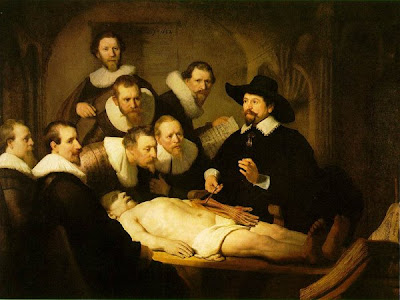 2008 was the year where I became an amino acid chemist and as a consequence the Ninhydrin Stain has become my new friend. Many of the amino acids I handle these days are not UV active but fortunately the Ninhydrin Stain is great for visualising free amines and primary amines. Most of my amines are BOC-protected but they still develop nicely with ninhydrin because the BOC group is cleaved upon treatment with the stain.
2008 was the year where I became an amino acid chemist and as a consequence the Ninhydrin Stain has become my new friend. Many of the amino acids I handle these days are not UV active but fortunately the Ninhydrin Stain is great for visualising free amines and primary amines. Most of my amines are BOC-protected but they still develop nicely with ninhydrin because the BOC group is cleaved upon treatment with the stain.-
Ninhydrin Stain Recipe
100 ml container
0.2 g Ninhydrin
0.5 ml Acetic acid
100 ml n-Butanol
4.5 ml Water
-
 After treatment with a heat gun Ninhydrin Stain tends to give brightly coloured pink to purple spots as shown above. The spots can fade rather fast so record the result immediately. In the past I have been using a Ninhydrin Stain that didn't contain water, however adding a bit of water seems to improve the result a fair bit. D!
After treatment with a heat gun Ninhydrin Stain tends to give brightly coloured pink to purple spots as shown above. The spots can fade rather fast so record the result immediately. In the past I have been using a Ninhydrin Stain that didn't contain water, however adding a bit of water seems to improve the result a fair bit. D!
 So when Steven Ley comes up with a method that involves scooping solid magnesium nitride into a flask with your ester and some methanol, heating it to 80 oC for 24 hr, work up, filter, done! then that is really exciting good news to the synthetic organic chemist.
So when Steven Ley comes up with a method that involves scooping solid magnesium nitride into a flask with your ester and some methanol, heating it to 80 oC for 24 hr, work up, filter, done! then that is really exciting good news to the synthetic organic chemist.-the-anatomy-lecture-of-dr-nicolaes-tulp.jpg) Slides:
Slides:
 As always someone else got the idea first and where I work now melting point determinations are fully automated using an
As always someone else got the idea first and where I work now melting point determinations are fully automated using an 


 orcid.org/0000-0003-3926-7047
orcid.org/0000-0003-3926-7047


